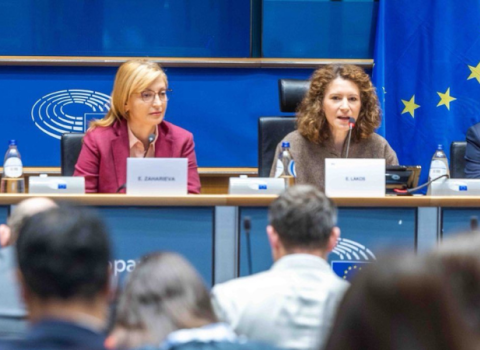
Bruno Van Pottelsberghe
The language obstacle is the huge stumbling block on creating an EU patent that was left unresolved in the Swedish Presidency’s breakthrough last December.
Although claimed as a breakthrough, that agreement is “preliminary and fragile,” believes Van Pottelsberghe, a professor at Université Libre de Bruxelles. “The risk for Europe is that current moves result in a patent that does not cure the system of its major ills.” These include unnecessary expense, legal uncertainty and fragmentation.
Some progress was made in December, in particular towards establishing a single centralised litigation system covering both EU and European patents, Van Pottelsberghe says in the policy brief, ‘Europe should stop taxing innovation’.
But language, complexity, affordability and governance are the four issues that are “the keys to success,” he says. Instead of compulsory translation into several languages, patents granted by the European Patent Office should be in English only.
English is, “The choice of the business sector, especially technology-based start-ups and academic spin-offs” and “de facto the worldwide scientific and technical language,” according to Van Pottelsberghe. Rather than a struggle for linguistic dominance among different European languages, Van Pottelsberghe says Chinese is the language to look out for as the one that could challenge English.
“The EU should secure its long-term access to scientific knowledge by ensuring English remains the main language of communication for business, scientific and technological matters,” he says.
When it comes to complexity, Van Pottelsberghe criticises the proposed addition of another layer, thereby creating a three-tier system of national patents, European patents providing protection in selected countries, and EU patents, offering protection in the EU as a whole. This will give companies scope, “to game the system,” he says.
It would be far better if national patent offices stopped granting patents, whilst continuing to provide advice and search services, and that the current European patent should also be scrapped, either immediately, or a few years after the EU patent is established.
The creation of an EU patent would be a “huge step forward” for SMEs and young companies. Relative costs would drop significantly and affordability could be improved further by giving start-ups a 50 per cent reduction in entry fees up to their sixth year, with a pay-back process of the 50 per cent reduction for companies that keep their patents enforced for more than six years.
On governance, Van Pottelsberghe argues that “a radical shake-up” of the European Patent Office is needed. The EPO board should be streamlined, with the number of representatives of national patent offices reduced from 35 to 10 or 15, he says. Another suggestion is for EPO’s administrative council to include stakeholders other than national patent organisations alone. Representatives from business, consumer associations and academic institutions could be included, he argues.
The patent system, “is not the only cause of Europe’s lack of inventive activity,” but it is “one of the weakest links,” Van Pottelsberghe believes. The current failings have to be addressed if Europe is to stand any chance of meeting the target of spending 3 per cent of GDP on R&D, a legacy ambition of last decade’s Lisbon Strategy that has reappeared in the new Europe 2020 strategy.
The full report is available at: http://www.bruegel.org/uploads/tx_btbbreugel/pb_2010-02_300310-2.pdf





 A unique international forum for public research organisations and companies to connect their external engagement with strategic interests around their R&D system.
A unique international forum for public research organisations and companies to connect their external engagement with strategic interests around their R&D system.